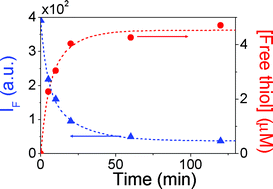Photodegradation mechanism and reaction kinetics of recombinant human interferon-α2a
Abstract
The

* Corresponding authors
a
Health Metrology Group, Division of Metrology for Quality Life, Korea Research Institute of Standards & Science, P.O. Box 102, Yuseong, Daejeon, Korea
E-mail:
kimhh@kriss.re.kr
b
Nanobio Fusion Research Center, Division of Advanced Technology, Korea Research Institute of Standards & Science, P.O. Box 102, Yuseong, Daejeon, Korea
E-mail:
nwsong@kriss.re.kr
c Korean German Institute of Technology Biotech Research Center, KGIT Mokdong Center, 905-27, Mok-dong, Yangcheon-gu, Seoul, Korea
The

 Please wait while we load your content...
Something went wrong. Try again?
Please wait while we load your content...
Something went wrong. Try again?
H. Kim, Y. M. Lee, J. Suh and N. W. Song, Photochem. Photobiol. Sci., 2007, 6, 171 DOI: 10.1039/B614971E
To request permission to reproduce material from this article, please go to the Copyright Clearance Center request page.
If you are an author contributing to an RSC publication, you do not need to request permission provided correct acknowledgement is given.
If you are the author of this article, you do not need to request permission to reproduce figures and diagrams provided correct acknowledgement is given. If you want to reproduce the whole article in a third-party publication (excluding your thesis/dissertation for which permission is not required) please go to the Copyright Clearance Center request page.
Read more about how to correctly acknowledge RSC content.
 Fetching data from CrossRef.
Fetching data from CrossRef.
This may take some time to load.
Loading related content
